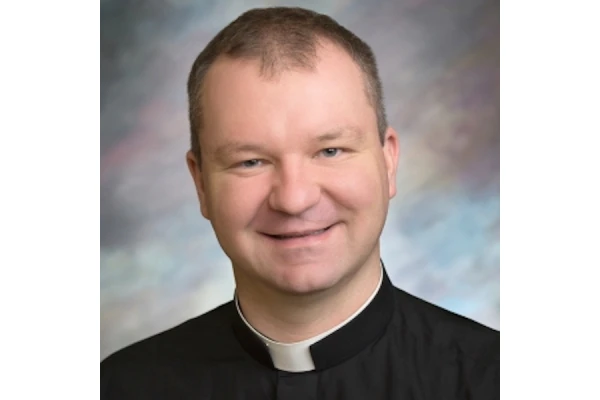
Denver Newsroom, Nov 25, 2020 / 12:20 pm (CNA).- A South Dakota priest has been sentenced to almost eight years in federal prison, after he was convicted of 65 felonies related to stealing donations from Catholic parishes. Ordered to pay more than $300,000 in restitution, the priest said he stole in part because he disagrees with Catholic doctrine on homosexuality.
The priest is also facing federal criminal charges related to child sexual abuse and possession of child pornography.
Fr. Marcin Garbacz, 42, was convicted in March of wire fraud, money laundering, and tax fraud — crimes he committed while serving as a chaplain and Catholic school teacher in the Diocese of Rapid City, between 2012 and 2018. Garbacz was ordained a priest in 2004.
Prosecutors said the priest stole more than $250,000 from parishes, spending some money on artwork, a piano, a Cadillac, liturgical items, and a $10,000 diamond ring.
In 2019, the priest was arrested at Seattle’s airport, shortly before boarding a flight to his native Poland, for which he had purchased a one-way ticket. He had more than $10,000 in cash in his possession, along with several chalices, diamonds, icons, pens, an expensive watch, along with cufflinks and other jewelery items.
He had withdrawn more than $50,000 from his bank account before the flight, according to court records.
According to prosecutors, the priest snuck into Rapid City parishes in the middle of the night to steal cash donations after Sunday Masses. He replaced the tamper-proof bags in which the cash was stored with new ones he’d purchased online, and told people that his mother sent him money each month. When he bought expensive chalices and other liturgical items, he told people they were gifts, and had false inscriptions engraved upon them as proof.
Before he was arrested, Garbacz had been suspended from ministry, apparently after he was caught stealing roughly $620 from a parish in 2018, and was convicted of misdemeanor petty theft. He was sent by the diocese for six months to a residential treatment program, but left early and then worked as a FedEx driver in Washington. He reportedly attempted to flee after becoming aware of the federal investigation against him.
At his sentencing Monday, Garbacz apologized to parishioners, and said he was angry with the Diocese of Rapid City and the Catholic Church. According to the Rapid City Journal, the priest said he was upset that Catholic doctrine considers homosexuality to be “intrinsically disordered.”
Garbacz, the Rapid City Journal reported, identifies as gay, and claims he was treated as a “second-class citizen” because of his dissent on the Church’s moral teachings.
After Garbacz was sentenced, the Diocese of Rapid City told CNA that “The diocese trusts in the judicial system and appreciates its dedication in making sure that justice is served in this case.”
Garbacz is also facing charges related to child sexual abuse and possession of child pornography.
He has been indicted on sex federal charges, and is alleged to have engaged in sexual conduct with someone a boy under the age of 18 while in 2011 traveling in a foreign country. An FBI agent also discovered, while searching a thumb drive during the financial crimes investigation, that the priest was in possession of child pornography. At least one pornographic video involving a minor appears to have been produced by Garbacz, according to the Rapid City Journal.
It is not yet clear what canonical charges the priest is facing, or if he is expected to be laicized.
If you value the news and views Catholic World Report provides, please consider donating to support our efforts. Your contribution will help us continue to make CWR available to all readers worldwide for free, without a subscription. Thank you for your generosity!
Click here for more information on donating to CWR. Click here to sign up for our newsletter.




Ridiculous. He should have resigned from the priesthood.